UPSC Exam > UPSC Notes > Famous Books for UPSC Exam (Summary & Tests) > British Conquest of India- 2
British Conquest of India- 2 | Famous Books for UPSC Exam (Summary & Tests) PDF Download
| Table of contents |

|
| Expansion Under Lord Wellesley (1798 - 1805) |

|
| The Conquest of Sindhu |

|
| The Conquest of the Punjab |

|
| Dalhousie and the Policy of Annexation (1848 - 56) |

|
Dual System of Administration of Bengal
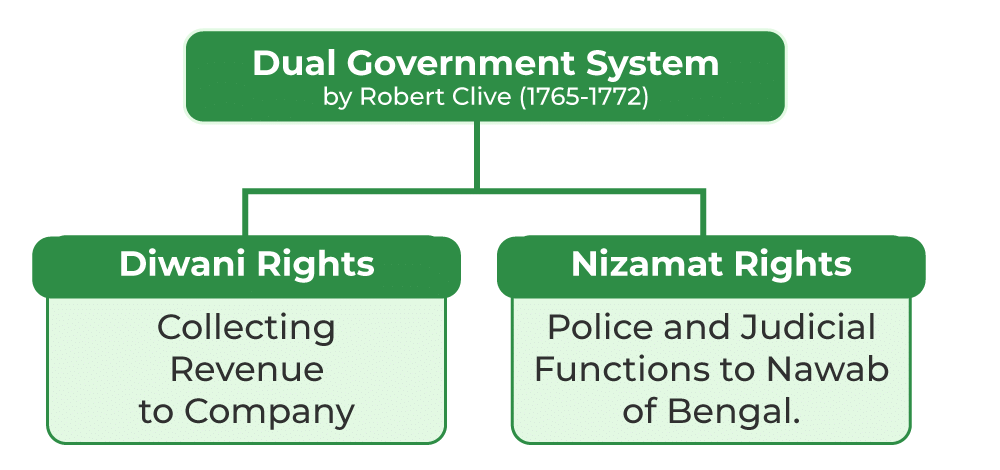
- The East India Company gained control over Bengal around 1765.
- The Nawab relied on the British for both internal and external security.
- On 12 August 1765, the Mughal emperor appointed the East India Company as the Diwan of Bengal.
- As the Diwan, the Company directly collected Bengal's revenues and had influence over the police and judicial powers by nominating the Deputy Subahdar.
- This setup was called the 'Dual' or 'Double' government.
- For the British, this was advantageous as they had power without responsibility, while the Nawab and his officials were responsible for administration without the authority to fulfill it.
- Clive described Bengal as a place of chaos, corruption, and unjust wealth accumulation.
- Robert Clive himself amassed a large fortune in India. Despite being questioned for corruption, he was ultimately cleared but tragically took his own life.
- The Company profited by extracting wealth from Bengal, halting money transfers from England and using Bengal's revenues to buy and sell goods overseas.
Wars Under Warren Hastings (1772-85) and Cornwallis (1768 - 93)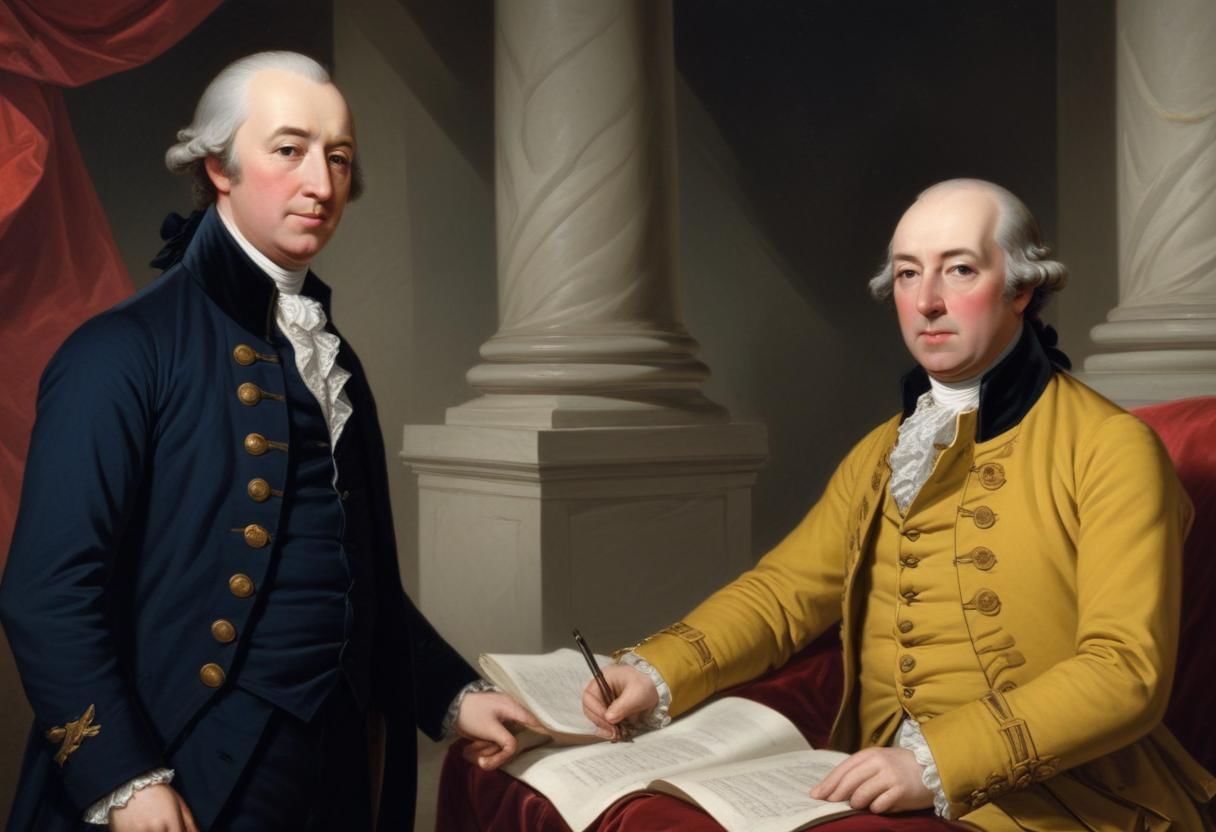
- The East India Company had become a significant force in India by 1772.
- Its leaders in England and officials in India aimed to strengthen their hold over Bengal before expanding further.
- However, their interference in Indian states' internal matters and their desire for land and wealth led to a series of conflicts.
- The British found themselves up against a formidable alliance of the Marathas, Mysore, and Hyderabad.
- A peace agreement was reached in 1782 through the Treaty of Salbai, preserving the existing state of affairs. This deal shielded the British from unified Indian opposition.
- In July 1781, the British forces led by Eyre Coote defeated Haidar Ali at Porto Novo, safeguarding Madras.
- Following Haidar Ali's passing in December 1782, his son Tipu Sultan continued the war.
- Conflict resumed in 1789 between the two sides, culminating in Tipu's defeat in 1792.
- Under the Treaty of Seringapatam, Tipu surrendered half of his lands to the English and their allies, along with paying an indemnity of 330 lakhs of rupees.
Expansion Under Lord Wellesley (1798 - 1805)
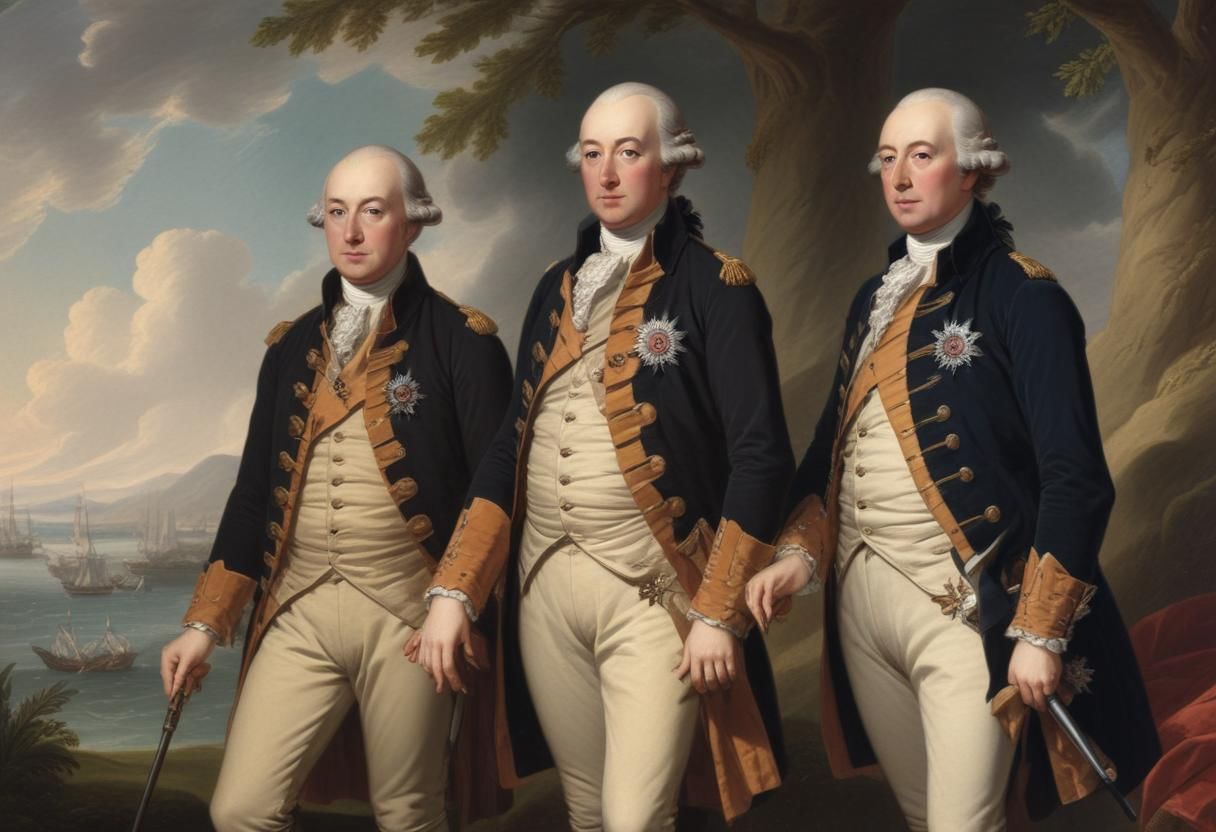
- The significant expansion of British control in India happened under Lord Wellesley’s leadership in 1798.
- Wellesley used three main methods: 'Subsidiary Alliances', direct conflict, and taking over territories of previously subordinate rulers.
- In the 'Subsidiary Alliance' setup, the Indian ruler had to allow a British military presence in their land and pay for its upkeep. Sometimes, land was given up instead of annual payments.
- These alliances also meant that the Indian ruler had to have a British representative at their court, seek British approval for employing Europeans, and consult the Governor-General before dealing with other Indian leaders.
- In exchange, the British promised protection but often interfered in local matters despite pledging not to.
- In reality, agreeing to a 'Subsidiary Alliance' meant giving up a state's independence, losing rights to self-defense, diplomacy, hiring foreign advisors, and settling disputes.
- The cost of the British military presence was often too high for the states to sustain, leading to economic problems and poverty.
- These alliances resulted in the dissolution of the protected states' armies, leaving many soldiers unemployed and causing distress.
- Lord Wellesley established these alliances with the Nizam of Hyderabad and the Nawab of Awadh in the late 1700s and early 1800s.
- The British defeated Tipu Sultan in 1799 before he could receive French assistance.
- The Marathas were the only major power not under British control. The Maratha Empire was a coalition of five chiefs, with the Peshwa in a leading role.
- Peshwa Baji Rao II signed a 'Subsidiary Treaty' with the British in 1802, leading to the return of Holkar's territories in 1806 after peace negotiations.
Question for British Conquest of India- 2Try yourself: What method did Lord Wellesley use to expand British control in India?View Solution
Expansion Under Lord Hastings (1813 - 22)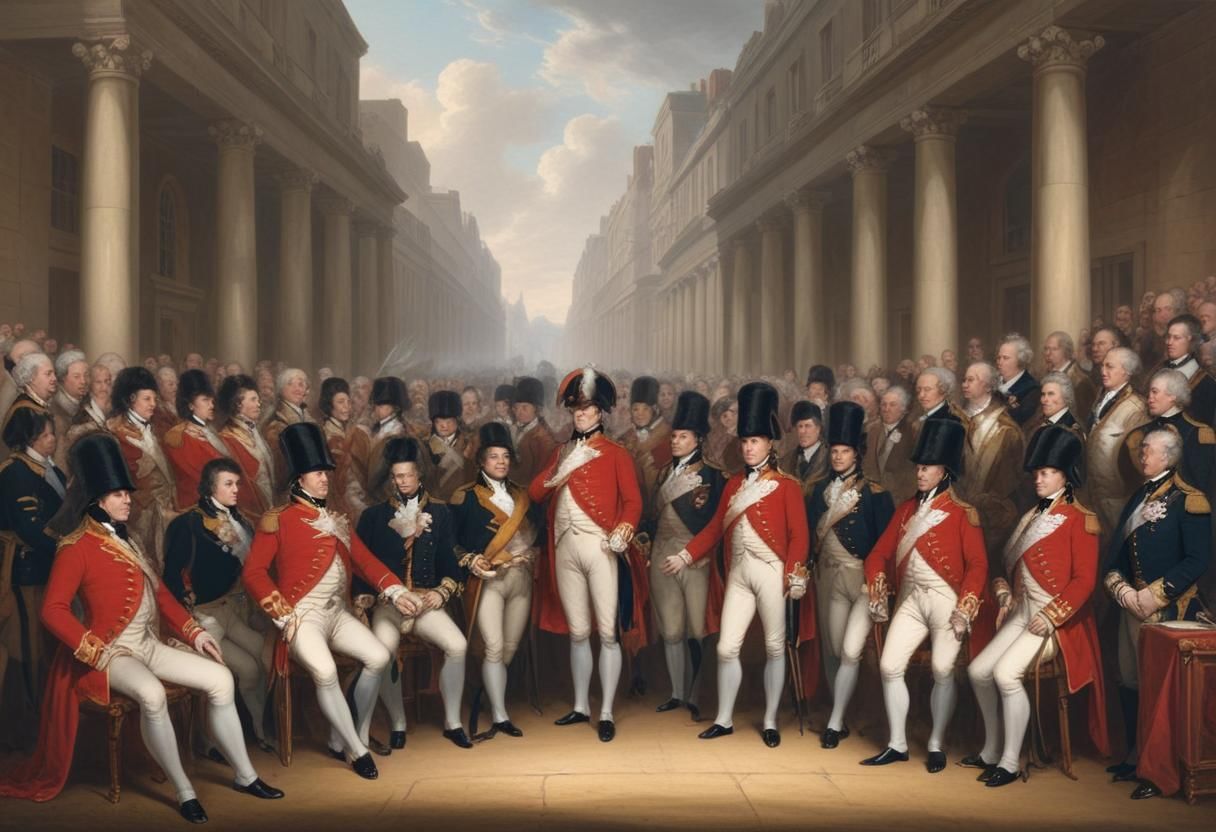
- The Second Anglo-Maratha War had shattered the power of the Maratha chiefs but not their spirit.
- They made a desperate last attempt to regain their independence and old prestige in 1817.
- By 1818, the entire Indian subcontinent excepting the Punjab and Sindh had been brought under British control.
- Part of it was ruled directly by the British and the rest by a host of Indian rulers over whom the British exercised paramount power.
The Conquest of Sindhu
- The takeover of Sindh happened due to the increasing rivalry between Britain and Russia in Europe and Asia.
- In 1832, a treaty was signed that allowed British trade access to the roads and rivers of Sindh.
- The leaders of Sindh, called Amirs, were forced to agree to a Subsidiary Treaty in 1839.
- Sindh was captured in 1843 after a short campaign led by Sir Charles Napier. He famously mentioned in his diary, "We have no right to take Sind, yet we will, and it will be a very beneficial, useful, and humane act of scoundrelism." He was rewarded with seven lakhs of rupees for completing the mission.
The Conquest of the Punjab
- The death of Maharaja Ranjit Singh in June 1839 was followed by political instability and rapid changes of government in the Punjab.
- Lord Gough, the Commander-in-Chief, and Lord Hardinge, the Governor-General, were marching towards Ferozepur, it decided to strike. War between the two was thus declared on 13 December 1845.
- The Punjab Army was forced to concede defeat and to sign the humiliating Treaty of Lahore on 8 March 1846.
- The British annexed the Jullundhar Doab and handed over Jammu and Kashmir to Raja Gulab Singh Dogra for a cash payment of five million rupees.
- Lord Dalhousie seized this opportunity to annex the Punjab. Thus, the last independent state of India was absorbed in the British Empire of India.
Dalhousie and the Policy of Annexation (1848 - 56)
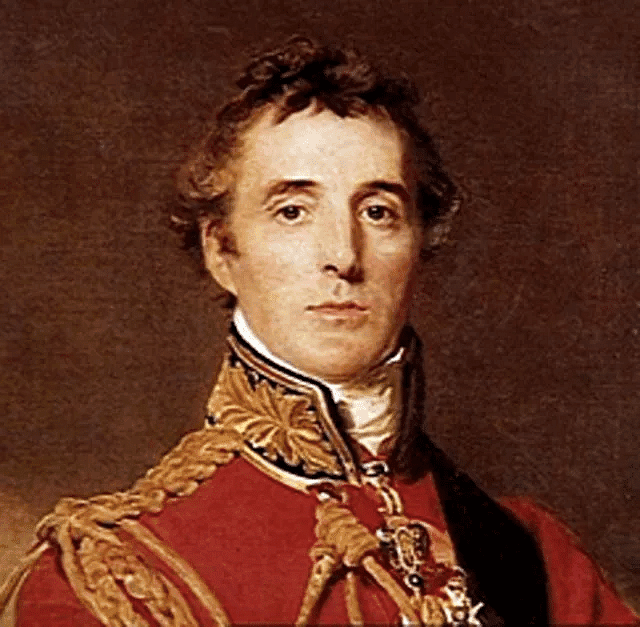
- Lord Dalhousie arrived in India in 1848 as the Governor-General with a strong desire to expand direct British control over a wide area.
- He believed that eventually, all native states in India would cease to exist.
- Lord Dalhousie's main method for enforcing his annexation policy was the 'Doctrine of Lapse'.
- According to this doctrine, when a ruler of a protected state died without a natural heir, the state would become part of British India unless the ruler had obtained British approval for an adopted heir.
- Several states, such as Satara in 1848 and Nagpur and Jhansi in 1854, were annexed using this doctrine.
- Lord Dalhousie also dismissed the titles of many former rulers and stopped their pensions.
- For example, titles like those of the Nawabs of Carnatic and Surat, and the Raja of Tanjore were abolished.
- When the ex-Peshwa Baji Rao II passed away, Dalhousie refused to provide pay or pension to his adopted son, Nana Saheb.
- Lord Dalhousie aimed to annex the kingdom of Awadh, but the presence of multiple heirs prevented the use of the Doctrine of Lapse.
- Ultimately, Nawab Wajid Ali Shah of Awadh was accused of mismanagement and failure to implement reforms, leading to the annexation of his state in 1856.
Question for British Conquest of India- 2Try yourself: Which policy did Lord Dalhousie use to annex several states in India during his term as Governor-General?View Solution
The document British Conquest of India- 2 | Famous Books for UPSC Exam (Summary & Tests) is a part of the UPSC Course Famous Books for UPSC Exam (Summary & Tests).
All you need of UPSC at this link: UPSC
|
744 videos|1444 docs|633 tests
|
FAQs on British Conquest of India- 2 - Famous Books for UPSC Exam (Summary & Tests)
| 1. What were the main reasons behind the British conquest of India? |  |
Ans. The British conquest of India can be attributed to several factors. One of the main reasons was the British East India Company's desire to establish trade relations and secure profitable opportunities in India. Additionally, the British sought to control the Indian subcontinent for geopolitical purposes, to counter their European rivals' influence and expand their own empire. The weakening of the Mughal Empire and the subsequent rise of regional powers also provided an opportunity for the British to assert their authority and establish dominance in India.
| 2. How did the British East India Company gain control over India? |  |
Ans. The British East India Company gradually gained control over India through a combination of diplomatic alliances, military conquests, and economic manipulation. Initially, the company established trading posts and formed alliances with local Indian rulers, allowing them to expand their influence. Over time, they engaged in conflicts with rival European powers and Indian states, eventually emerging as the dominant force. The decisive victory in the Battle of Plassey in 1757 marked a turning point, after which the company began to directly administer territories and collect revenues, effectively taking control over large parts of India.
| 3. How did the British rule impact India socially and economically? |  |
Ans. The British rule had significant social and economic impacts on India. Socially, it led to the breakdown of traditional Indian institutions and practices. The introduction of British education and legal systems brought about a cultural shift and the emergence of a class of English-educated Indians. At the same time, the British rule also perpetuated social divisions and inequalities. Economically, India's resources were exploited for the benefit of British industries, leading to deindustrialization and the destruction of local handicrafts. The imposition of heavy land taxes and the introduction of cash crops also resulted in agrarian distress and famines.
| 4. How did the British colonization affect the political landscape of India? |  |
Ans. The British colonization had a profound impact on the political landscape of India. The British East India Company initially ruled as a trading entity, but its territorial control expanded over time. The 1857 Rebellion, also known as the Indian Mutiny, marked a significant turning point. Following the rebellion, the British Crown assumed direct control over India, establishing the British Raj. The political system was centralized and authoritarian, with Indian rulers having limited power and British officials governing at various levels. This system eventually led to the growth of Indian nationalist movements, demanding self-rule and independence.
| 5. What were the long-term consequences of the British conquest of India? |  |
Ans. The long-term consequences of the British conquest of India were multi-faceted. On the positive side, the British introduced modern infrastructure, such as railways, telegraph lines, and irrigation systems, which facilitated economic development. They also established a unified legal system and introduced English education, which contributed to the growth of a modern middle class. However, the negative consequences were severe. The exploitation of Indian resources and the imposition of unfair economic policies resulted in poverty, famines, and economic underdevelopment. The social and cultural fabric of India was also significantly impacted, leading to cultural alienation and loss of traditional knowledge and practices. The British rule also sowed the seeds of Indian nationalism, which ultimately led to the country's struggle for independence.
Related Searches





















